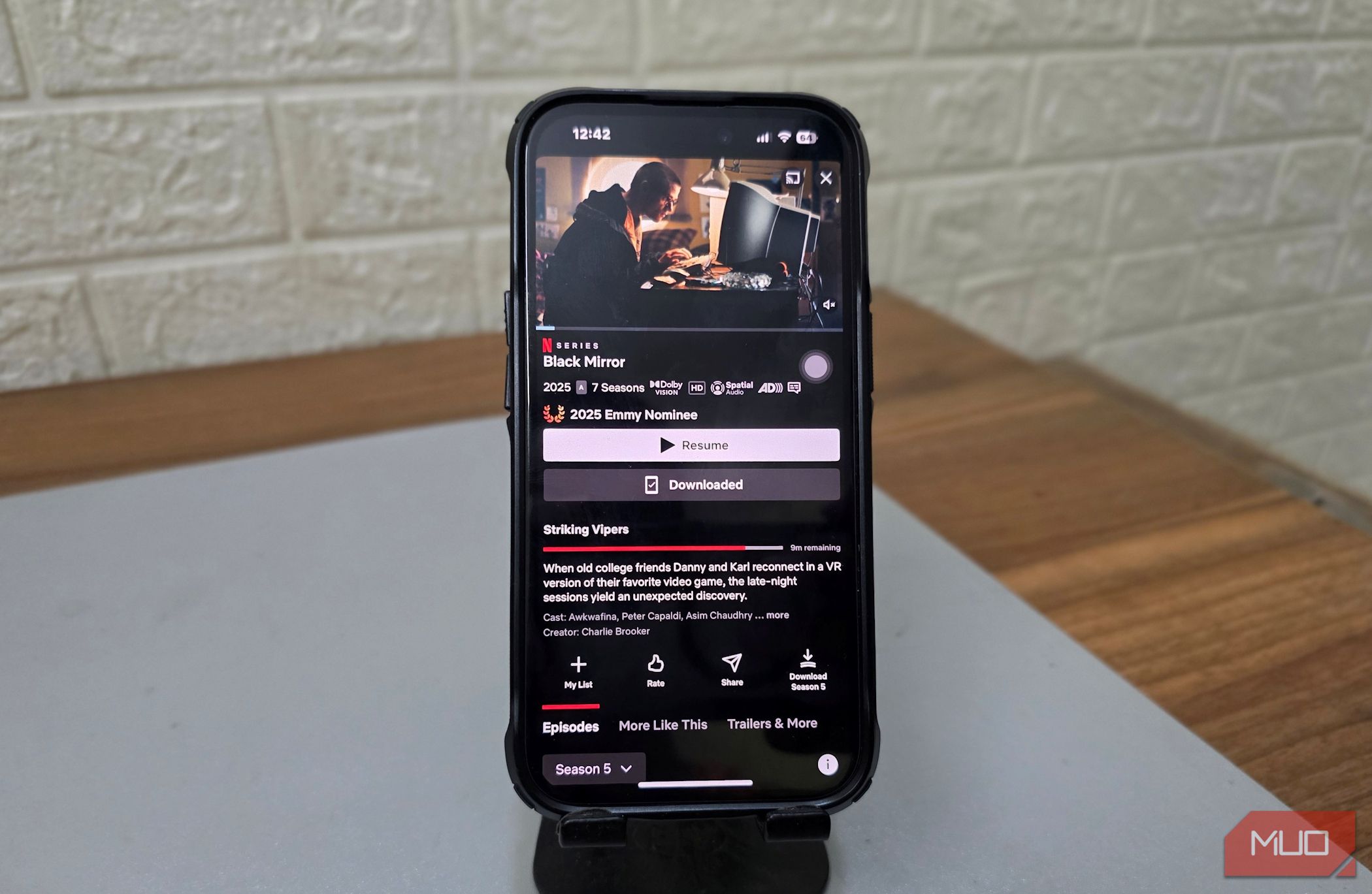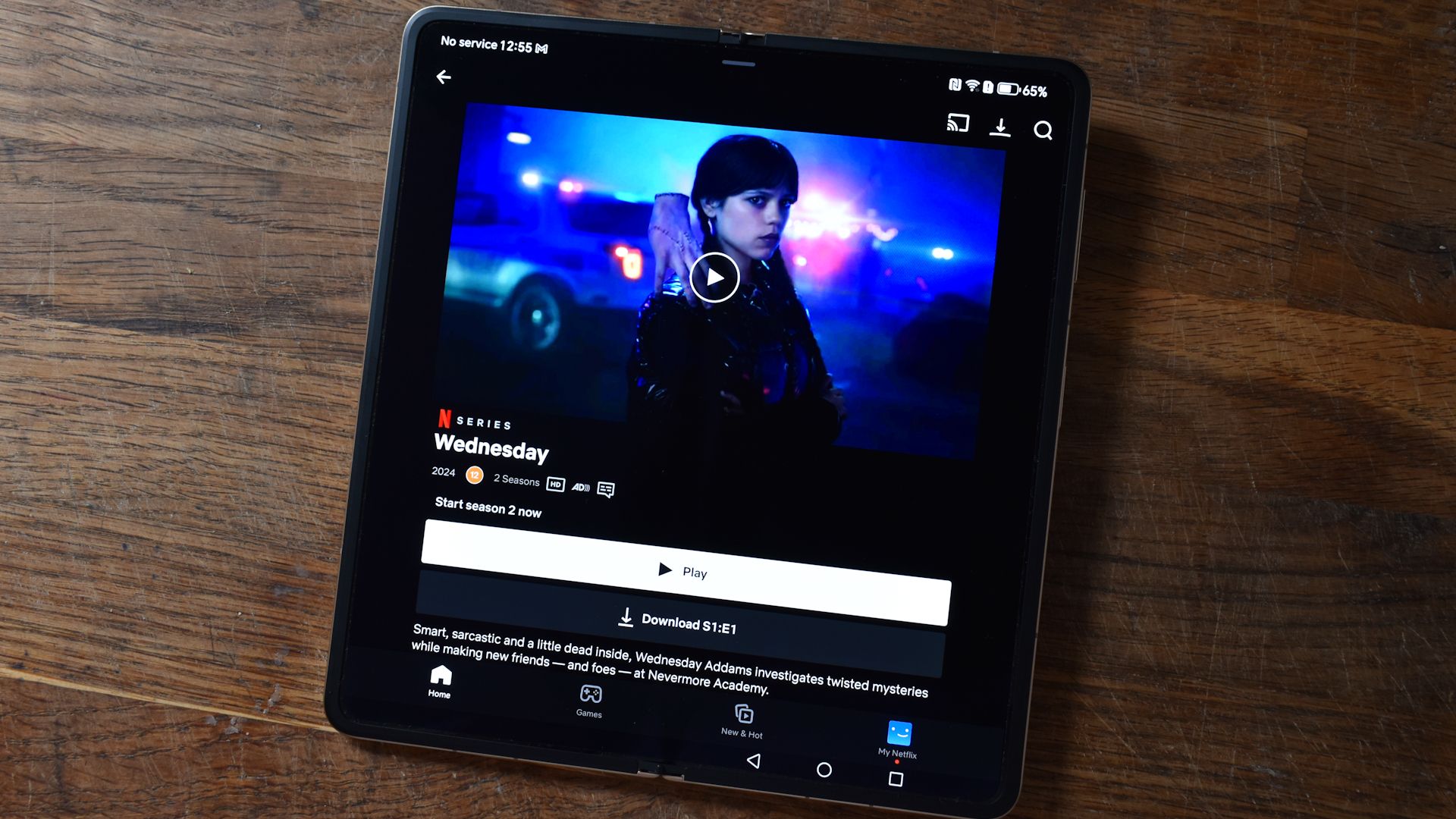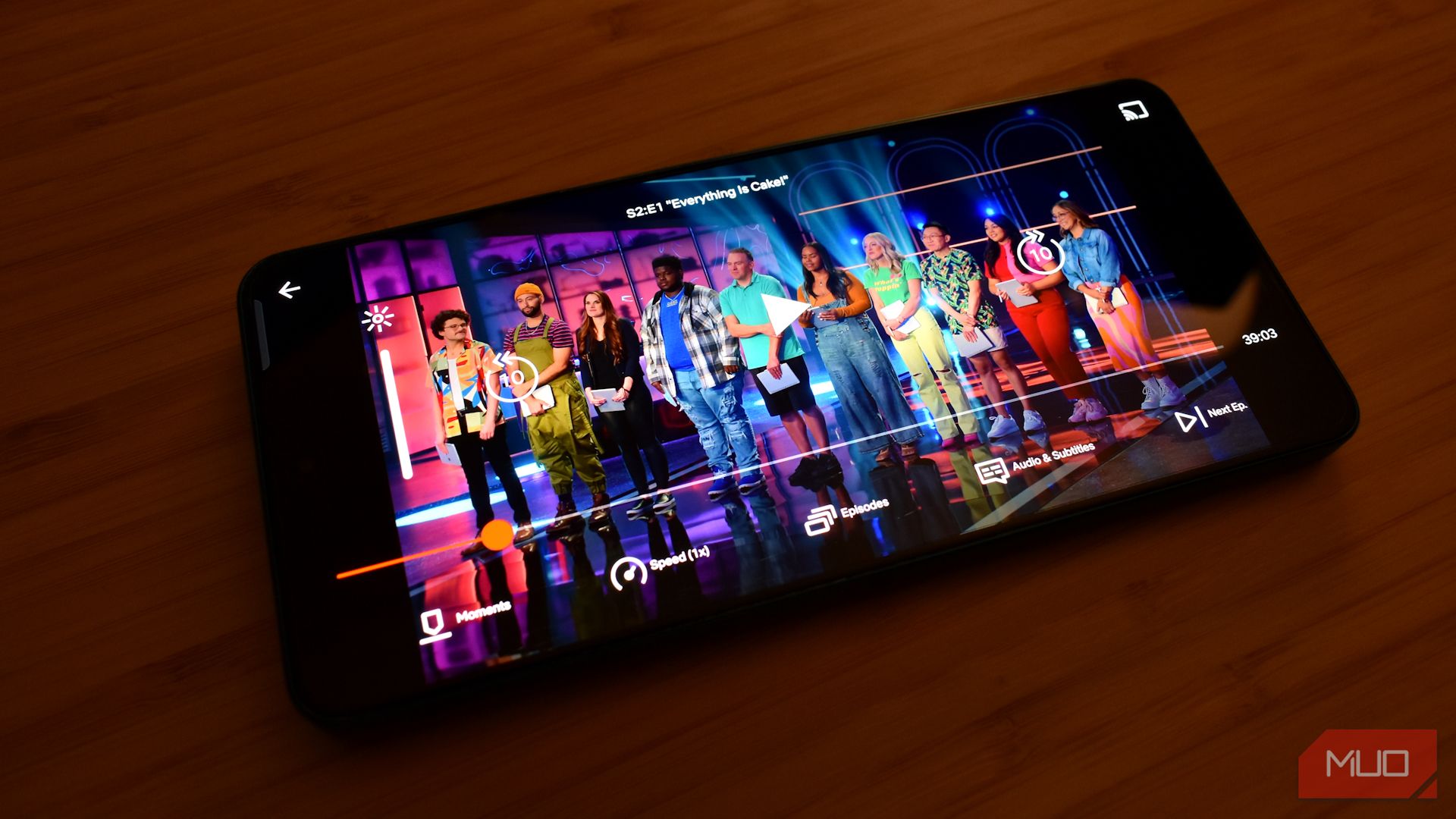Watching Netflix on your smartphone is convenient since you can even do it offline while on the go. Still, I avoid it for a few good reasons, and once you see them, you might too.
5
It Destroys Your Battery
Streaming Netflix on your phone may seem harmless, but it’s one of the fastest ways to drain your battery. It may not be as bad as gaming, but over time, this wear adds up. Video playback is one of the most power-hungry tasks your phone can handle.
It’s no surprise that the battery life for streaming video is always shorter than for audio playback. Apple’s battery life estimates for the iPhone 16 Pro, for example, say the device lasts up to 27 hours on video playback, a far cry from the 85-hour maximum for audio playback.
Worse still, watching for long periods while your phone is plugged in can heat the battery, accelerating wear. Even if you’re not streaming for hours, doing it regularly shortens your battery’s long-term health. That’s why I prefer watching on a TV, because I don’t have to worry about battery life.
4
Notifications Kill Immersion
Another issue with watching Netflix on your phone is the constant stream of notifications that can shatter your focus. Whether it’s a text, call, email, or social media alert, these interruptions break the flow of your viewing experience and yank you out of the story, especially if you have lots of apps.
I only watch a few times a week, so I want the experience to be worthwhile. When I sit down to catch the latest episode of a show I enjoy, I want to be fully immersed in it. And that’s what streaming should be: immersive, not something you squeeze in between messages and app alerts.
3
Poor Ergonomics
Watching Netflix on your phone is uncomfortable, too. Holding a phone for extended periods can quickly become exhausting. Whether you’re propping it up awkwardly on your lap, gripping it in your hand, or hunching over it on a table, none of these setups is ideal for extended viewing sessions.
Even with a phone stand, it’s hard to find a comfortable setup. You need a stable surface to place the device, which may not always be available, so you’ll probably still end up in an awkward position.
Your neck, wrists, and back can suffer from poor posture, especially if you’re watching while lying in bed or slouched on the couch. Over time, this kind of strain can lead to physical discomfort—or even chronic aches if it becomes a habit. There’s also the risk of eye strain, since you’re typically watching on a small screen from a close distance.
In contrast, watching on a TV or laptop lets you sit back and relax with no awkward angles and a far better posture. If you’re settling in to binge a series or enjoy a movie, comfort should be part of the experience. Your focus should be on the story, not on constantly shifting to find a position that doesn’t hurt. That’s why I’ll never go back to watching Netflix on my phone.
2
Audio Quality Is Subpar
Watching Netflix on your phone also downgrades the audio. All smartphones come with tiny built-in speakers that can’t deliver the depth, clarity, or dynamic range that movies and shows are designed for. Even dialogue can sound thin, background music often gets lost, and action scenes lack the punch and bass that make the genre stand out.
Plugging in headphones or using earbuds helps, but even then, the sound still can’t compete with the quality of a proper home theater setup or soundbar. I use a soundbar and it’s miles better than earbuds, headphones, or—worst of all—phone speakers.
Audio is a huge part of immersion, but on a phone, you’re only getting a watered-down version of the experience. If I’m watching something with serious production value, I want to hear it in all its richness.
1
Smartphones Have Small Screens
Another major downside of watching Netflix on your phone is the small screen size, which compromises the viewing experience. It’s also less immersive because the screen takes up less of your field of vision, unlike a TV, which fills more of it.
Whether I’m watching an action-packed blockbuster or an epic drama, the limited screen real estate on the 6-inch phone screen makes it hard to appreciate the visuals and cinematography fully. I find it hard to enjoy the cinematic details like expansive landscapes and background elements as they feel cramped when compressed onto such a small screen.
Even though high-end modern smartphones have incredibly sharp and vibrant displays with features like high dynamic range (HDR), most phones top out at 1080p or 1440p. Native 4K resolution is a rarity in the smartphone world.
If you want to enjoy your favorite Netflix shows and movies the way they were meant to be experienced, your phone isn’t the best place to do it. Sure, watching on your phone is convenient, but it compromises nearly every other aspect: visuals, audio, comfort, and even your battery’s health. That’s why I’ll never go back to watching Netflix on my phone, and you might want to reconsider it, too.


